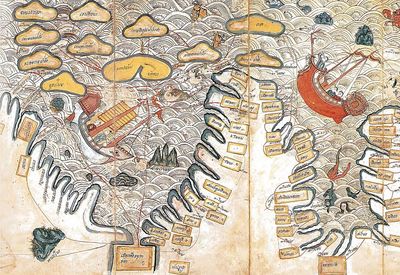Sea Region: Singapore, Johor, Riau ArchipelagoMilica Topalović, Hans Hortig, and Stefanie Krautzig

In maritime cultures, the sea is sometimes seen and imagined as the land: the source of livelihood, the space of everyday life and connections among people, their activities and settlements, which all gravitate toward it as the centre. Archipelagic life and structures, such as the Malay world along the Straits of Malacca and the Straits of Singapore, have evolved around the sea and relied on collaborative exchange over the water.
Once part of a sea region that was unified through maritime culture and trade, disparities and differences today characterize the tri-national space of Singapore, Johor and Riau Archipelago. Singapore represents the densely populated core and the economical focal point of the larger territory: Since the 1970s, its economy began to expand and incorporate productive hinterlands over the national boundary. As a result, Johor Bahru and Batam, two fast-growing industrial cities of over one million people each, have emerged at Singapore’s borders. They now create a de-facto metropolitan region of around eight million inhabitants.
Despite the shared maritime culture and history and high degree of economic synchronisation, the three sides still need to develop a common metropolitan vision with policies and instruments for cross-border regional steering.
This publication is the result of a project on the research on the tri-national space of Singapore, Johor, and Riau, that was carried out with students from the ETH Zurich, collaborators, experts, and guests. Five different works on the Sea Region were prepared by the students and are brought together in this book. The project builds on the research on the hinterlands of contemporary cities carried out since 2011, where Singapore and its multiple territorial imprints have served as the paradigmatic research case.
